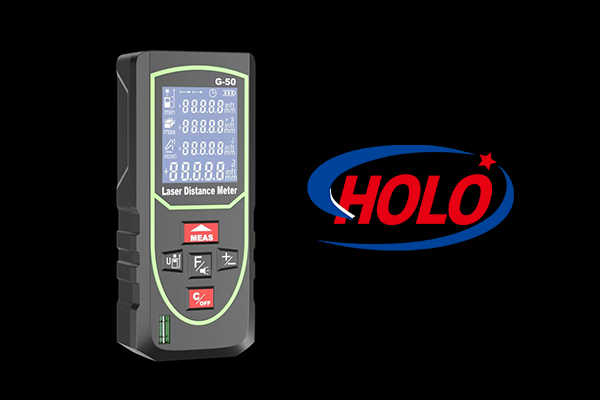Laser distance measurement is an instrument that uses laser to measure the distance of the target. When the laser distance measurement is working, it sends a very fine laser to the target, and the optical element receives the laser reflected by the target. The timer measures the time from sending to receiving the laser and calculates the distance from the observer to the target. If the laser is sent continuously, the detection range can reach 40 kilometers, and it can be operated day and night. If the laser is single-pulse, the precision is generally low, but it can achieve good relative precision when used for long-distance measurement. The world’s first laser generator was developed by scientists at Burt Aircraft in 1960. On this basis, the US military quickly carried out research on military laser equipment. In 1961, the first military laser distance meter was tested according to the US military’s theory, and since then, laser distance meters have entered a rapid development stage. Laser distance measurement are light in weight, small in size, easy to operate, fast in speed, and high in precision. Its error is only one-fifth to several tens of percent of that of the optical distance measurement , so it is widely used in terrain surveying, arena surveying, laser ranging of targets by tanks, aircraft, ships and artillery, as well as measuring the height of clouds, aircraft, missiles and spacecraft. It is a key technical equipment to improve the precision of high-altitude tanks, aircraft, ships and artillery. With the continuous decline in the price of laser distance measurement, laser rangefinders are gradually used in industrial production. A number of new small laser distance meters have been born in various countries around the world. It has the advantages of faster laser ranging speed, small size and reliable performance, and can be widely used in industrial measurement and control technology, mining, ports and other industries.
Measurement principles and methods of laser distance measurement
1. The principle of laser ranging can be basically summarized as measuring the time required for light to travel back and forth to the target, and then using the speed of light and the refractive index of air n to calculate the distance. Because it is impossible to measure time directly, it is generally to measure the phase difference of the continuous wave, which is called a phase laser distance meter. Phase difference measurement does not measure the phase difference of infrared or laser, but measures the phase difference of the signal applied to infrared or laser. There is a portable laser distance measurement in the construction industry, which is used to measure houses. The principle is the same.
2. Does the plane of the object to be measured need to be perpendicular to the light? Generally, high-precision laser distance measurement requires the cooperation of a total reflection prism, while the laser distance meter used for house measurement uses a smooth wall reflector for measurement. The main reason is that the distance is relatively close and the receiving sensitivity of the light source reflector is large enough. Therefore, it can be determined that the wall must be vertical, otherwise the radar echo signal is weak and the accurate distance cannot be obtained.
3. If the plane of the object to be measured is diffuse light, is it okay? Generally, it is okay. In actual engineering projects, thin plastic sheets will be used as vertical surfaces to solve the serious diffuse light problem.
4. The precision of ultrasonic sensors is relatively low and is currently rarely used.
5. The precision of laser distance measurements can reach 1 mm

